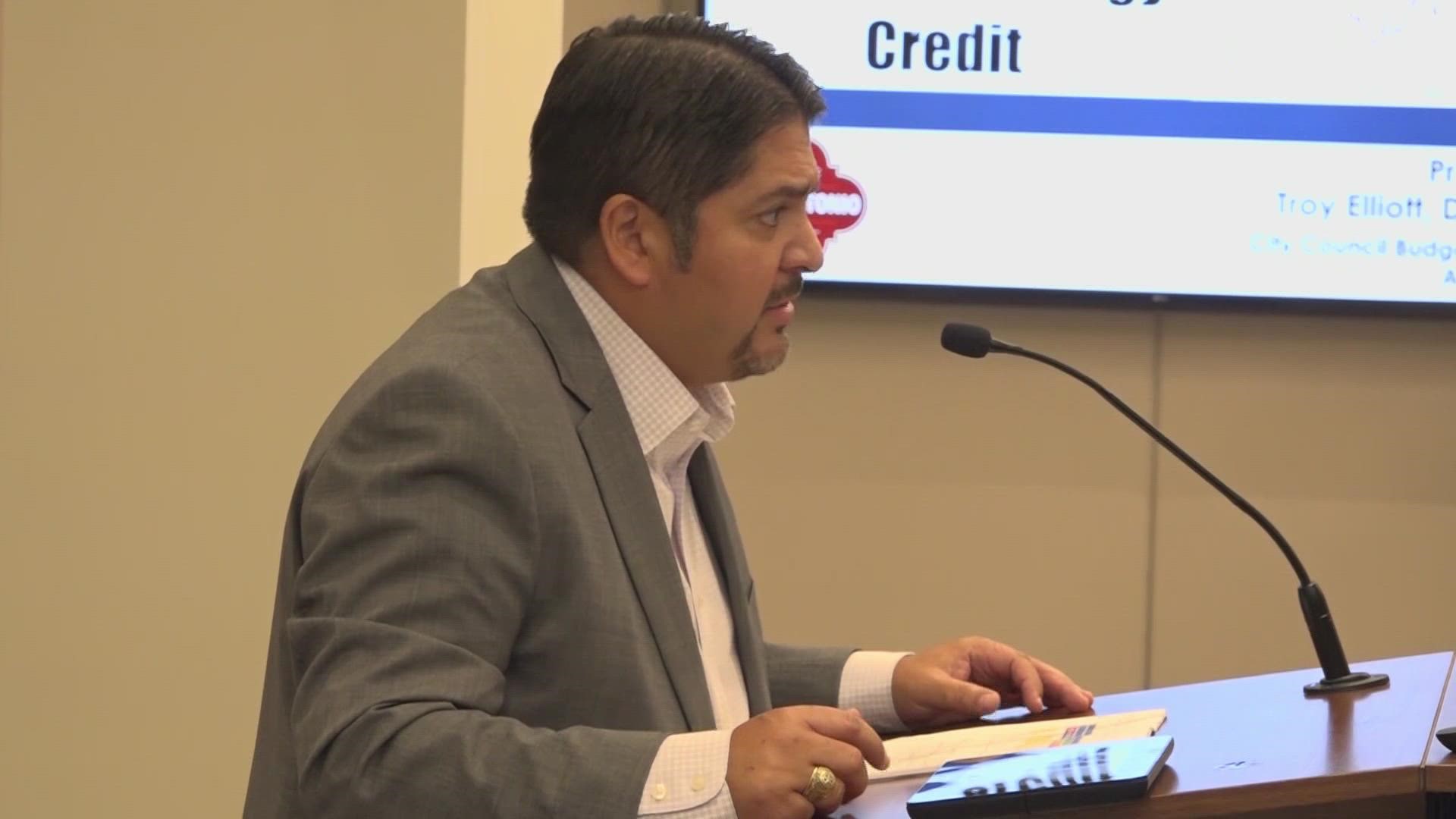SAN ANTONIO — The debate over how the city council will spend millions in revenue from CPS Energy continues.
On Tuesday, a budget work session was held where City Council members were presented with the proposed rebate for CPS Energy customers.
The rebate, and alternate plans for the $50 million dominated the discussion after the Fiscal Year 2023 proposed budget was presented to the council last week.
The city of San Antonio, who owns CPS Energy, says it is expecting $75 million in revenue from the 2022 fiscal year. City documents state the revenues “are unusually high due to an extremely hot summer and natural gas prices.”
As part of the proposed 2023 budget, the city wants to give $50 million back to CPS Energy customers. $45 million would be applied as a credit to all customers’ October bills based on their energy usage during the month of July. The average customer would see about $31 applied to their bill. $5 million would go towards the REAP program to assist low-income customers.
While no action was taken during Tuesday's meeting, council members were concerned about the money going to the commercial class residents.
According to the city's presentation, a class of 40 super large power service commercial accounts could receive an average credit over $100,000 on their bill.
On Tuesday, Councilman John Courage (D10) proposed giving an average of a $75 credit to residential CPS Energy customers within the city limits.
“If we just went with the plan that the city manager presented, we could be giving thousands of dollars to businesses as a rebate. But businesses take those costs they get and that’s part of doing business," Councilman Courage told KENS 5 prior to the meeting.
Here are councilmembers ideas on how to spend the $50 million:
- Councilman Mario Bravo (D1) proposes the $50 million be spent on proactive solutions in anticipation of future extreme weather.
- Councilman Bravo’s proposal includes $20 million to reduce urban heat island effects, $20 million to residential weatherization and energy-efficient upgrades to homes, and $10 million to outfit local community resiliency centers.
- Councilwoman Ana Sandoval (D7) proposed a plan similar to Councilman Bravo. She wants to create long-term funding from the STEP Program, which she says would cost $8-$10 million a year. Her proposal includes creating residential and business incentives for energy conservation, reducing heat island effects, and seeking federal grants to address what she calls a climate crisis.
- Councilwoman Dr. Adriana Rocha Garcia (D4) said during Thursday’s meeting she would like to see the $50 million be spent on roads and infrastructure.
- Councilman Manny Pelaez (D8) proposed the money to be spent on resources for domestic violence victims.
The initial plan proposed by city staff did gain support from Mayor Ron Nirenberg and Councilmember Clayton Perry (D10).
“Could we find reasonable things to do with the additional revenue specific to what we’re experiencing with the heat wave? Absolutely. But there has to be a balance, and that’s why I think the recommendation is sound,” Mayor Nirenberg told reporters after the meeting on Thursday.
City Council must vote on a plan to spend the $50 million by September 1 for the credit to be applied to October bills. Councilman Courage says he looks forward to continued discussions with city council.
“Any excessive revenue that’s going into the city, we should be able to use it any time we need it. But I’m all for coming to an understanding and agreement with the city council sooner rather than later,” Councilman Courage said.

